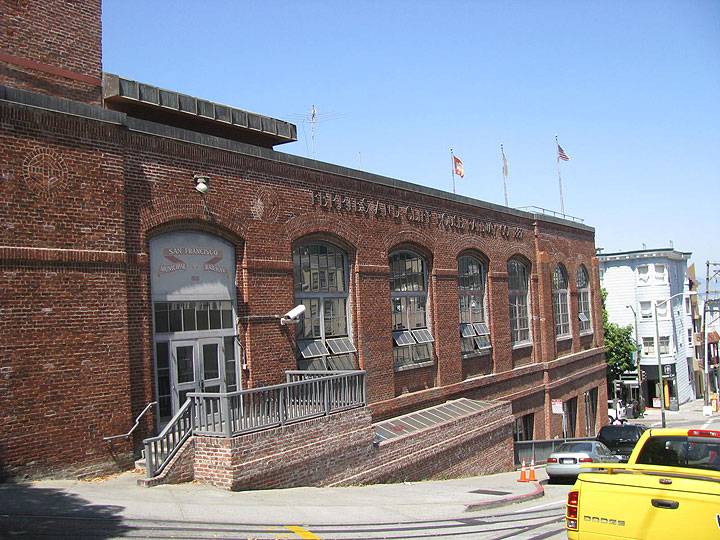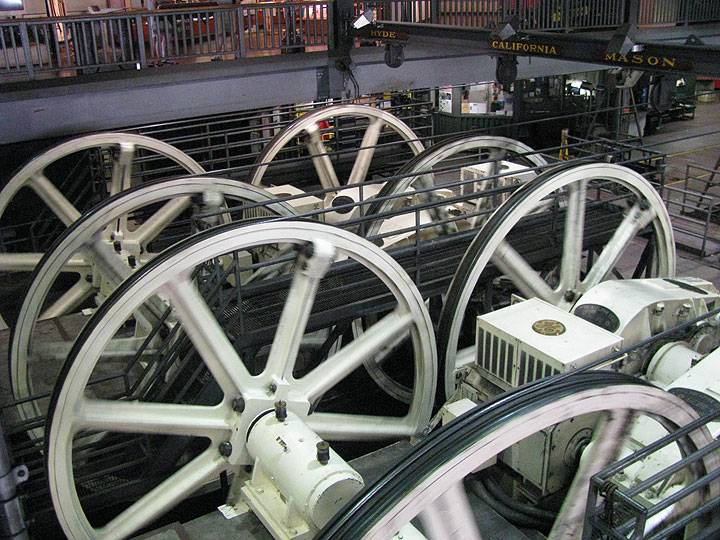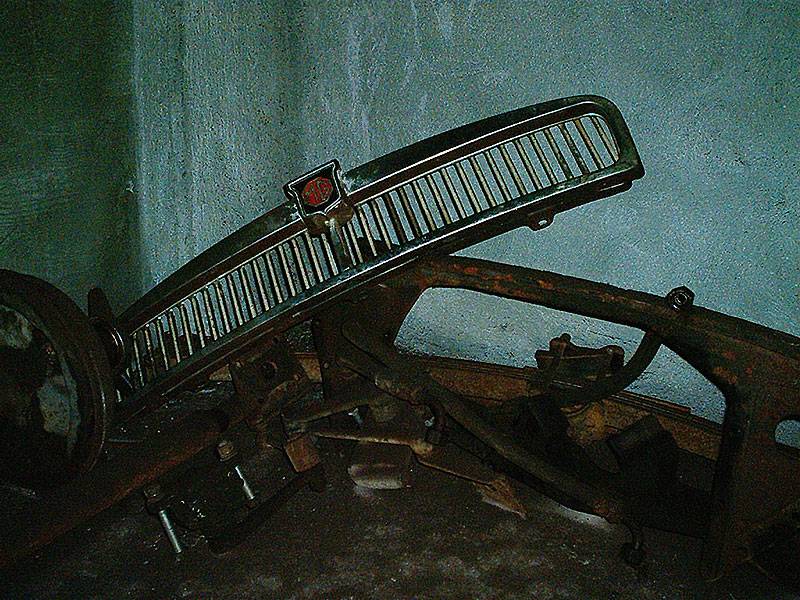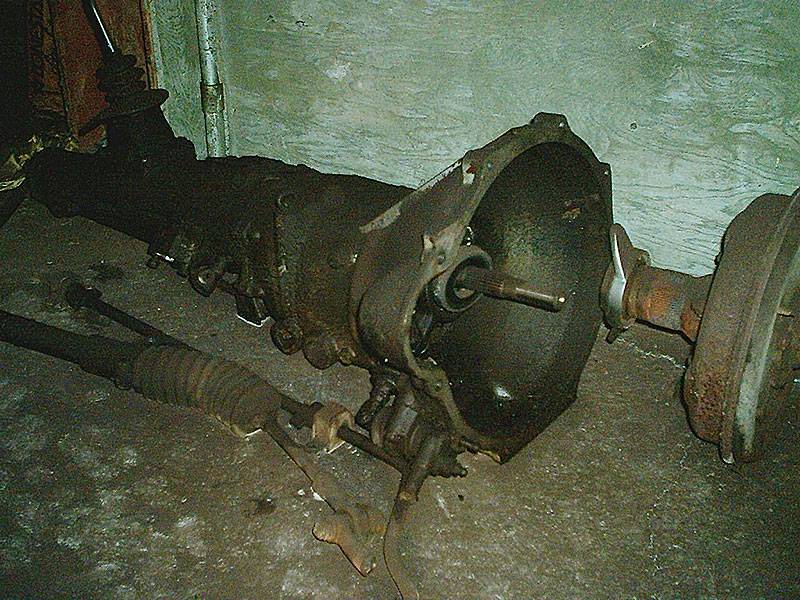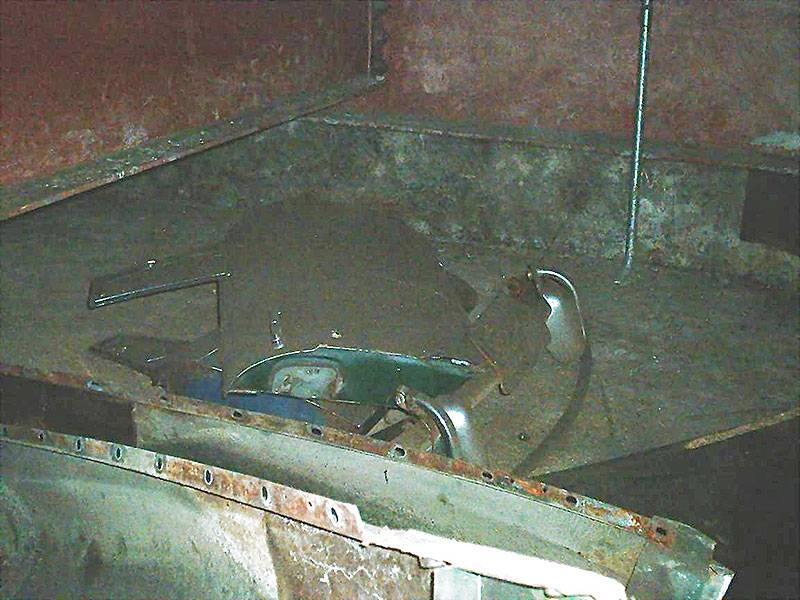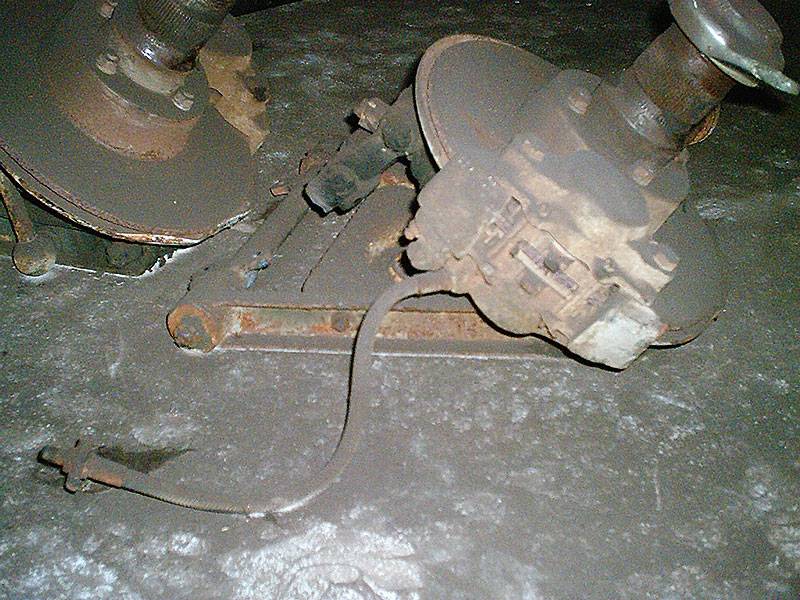MG Under the Cable Car Barn: Difference between revisions
(Created page with "'''<font face = Papyrus> <font color = maroon> <font size = 4>"I was there..."</font></font> </font>''' ''by Mike Jacobsen'' Image:Cable-car-museum-outside 0137.jpg '''...") |
m (Protected "MG Under the Cable Car Barn" ([Edit=Allow only administrators] (indefinite) [Move=Allow only administrators] (indefinite))) |
||
| (3 intermediate revisions by one other user not shown) | |||
| Line 1: | Line 1: | ||
'''<font face = Papyrus> <font color = maroon> <font size = 4>"I was there..."</font></font> </font>''' | '''<font face = Papyrus> <font color = maroon> <font size = 4>"I was there..."</font></font> </font>''' | ||
''by Mike Jacobsen'' | ''by Mike Jacobsen, 2000'' | ||
[[Image:Cable-car-museum-outside 0137.jpg]] | [[Image:Cable-car-museum-outside 0137.jpg]] | ||
| Line 15: | Line 15: | ||
''Photo: Chris Carlsson'' | ''Photo: Chris Carlsson'' | ||
We’ve all heard stories about the car found in a barn. The typical story tells of a classic car that was parked in the barn years ago for some reason. The car is always in good shape, has relatively few miles, and is now available for a song. Usually the story turns out to be mostly hearsay or a fable, but recently I was invited to see a real car in a real barn. And not just any old barn either, but in the oldest barn in San Francisco, the Cable Car Barn. | We’ve all heard stories about the car found in a barn. The typical story tells of a classic car that was parked in the barn years ago for some reason. The car is always in good shape, has relatively few miles, and is now available for a song. Usually the story turns out to be mostly hearsay or a fable, but recently I was invited to see a real car in a real barn. And not just any old barn either, but in the oldest barn in San Francisco, the [[Cable Cars|Cable Car]] Barn. | ||
This started while swapping stories at an MG club barbeque. One of the guys at the barbeque, Fred, worked at the cable car barn. (I’m changing the names here to protect the innocent just in case anyone from the San Francisco Municipal Railway ever reads this story.) Fred told us that years ago one of the maintenance guys took apart an MGB and hid it underneath the barn, in among the structure that supports the cable car tracks. Fred said he didn’t know why the parts were stashed there, but he’d seen the gas tank, trans, and axle. He hadn’t gone looking for other stuff but had heard that there was more. We all said sure. He answered our implied challenge by offering to show us. All any of us had to do was give him a call to set up a time to go down there some evening and look for the parts. | This started while swapping stories at an MG club barbeque. One of the guys at the barbeque, Fred, worked at the cable car barn. (I’m changing the names here to protect the innocent just in case anyone from the San Francisco Municipal Railway ever reads this story.) Fred told us that years ago one of the maintenance guys took apart an MGB and hid it underneath the barn, in among the structure that supports the cable car tracks. Fred said he didn’t know why the parts were stashed there, but he’d seen the gas tank, trans, and axle. He hadn’t gone looking for other stuff but had heard that there was more. We all said sure. He answered our implied challenge by offering to show us. All any of us had to do was give him a call to set up a time to go down there some evening and look for the parts. | ||
| Line 64: | Line 64: | ||
Currently the pieces are still there. We’re trying to work out an arrangement with Barney so that the club can find people that can use the stuff. We’re also trying to decide how we can get the pieces back out into the daylight. Meanwhile, the MGB continues to rest under the cable cars, vehicles several times its age. | Currently the pieces are still there. We’re trying to work out an arrangement with Barney so that the club can find people that can use the stuff. We’re also trying to decide how we can get the pieces back out into the daylight. Meanwhile, the MGB continues to rest under the cable cars, vehicles several times its age. | ||
[[Image:FrontSusp Brakes Hubs.jpg]] | |||
'''Front suspension brakes and hubs.''' | |||
''Photo: Mike Jacobsen'' | |||
[[category:North Beach]] [[category:landmarks]] [[category:1980s]] [[category:2000s]] [[category:Transit]] | [[category:North Beach]] [[category:landmarks]] [[category:1980s]] [[category:2000s]] [[category:Transit]] | ||
Latest revision as of 12:26, 7 November 2022
"I was there..."
by Mike Jacobsen, 2000
Cable Car Museum, 1201 Mason at Washington Street.
Photo: Chris Carlsson
Cable Car Museum, cable wheels running inside.
Photo: Chris Carlsson
We’ve all heard stories about the car found in a barn. The typical story tells of a classic car that was parked in the barn years ago for some reason. The car is always in good shape, has relatively few miles, and is now available for a song. Usually the story turns out to be mostly hearsay or a fable, but recently I was invited to see a real car in a real barn. And not just any old barn either, but in the oldest barn in San Francisco, the Cable Car Barn.
This started while swapping stories at an MG club barbeque. One of the guys at the barbeque, Fred, worked at the cable car barn. (I’m changing the names here to protect the innocent just in case anyone from the San Francisco Municipal Railway ever reads this story.) Fred told us that years ago one of the maintenance guys took apart an MGB and hid it underneath the barn, in among the structure that supports the cable car tracks. Fred said he didn’t know why the parts were stashed there, but he’d seen the gas tank, trans, and axle. He hadn’t gone looking for other stuff but had heard that there was more. We all said sure. He answered our implied challenge by offering to show us. All any of us had to do was give him a call to set up a time to go down there some evening and look for the parts.
I thought about it. I live in San Francisco and could get down to the barn on a weeknight, so I called Fred about a week later, and we set up a meeting to go spelunking. I was to meet him at a coffee shop across from the barn at 8:30 on a Wednesday night. When I talked to him he’d made a further search. It now looked to him like there were parts from two MGBs down there. The owner for one of them (we’ll call him Barney) still worked there for Muni, and said he put the pieces down there a long time ago. He didn’t know who owned the other parts.
I also got advice for what to wear. Attire for working on an MG was appropriate; evidently it was dirty under the barn. Fred suggested I wear coveralls, old shoes, gloves, and a hard hat (my bike helmet was OK), plus bring a flashlight. The hat was to keep from getting bonked by the low clearance where we would be going.
On the appointed evening I was there early, since finding a parking space was going to be tough. Only those who live in the City will appreciate this, but I got a completely legal spot just a block from the barn. I walked into the coffee shop we’d selected to meet at and ordered a drink for my wait. The barista looked at me in my old coveralls and asked if I worked at the barn. I just said I was going over there.
Fred arrived right on time. He had a bag with him that contained his hard hat, coveralls, video camera, flashlight, and a photo album from a trip made a few years ago. Secreted in back of the album were some shots of MGB parts under the barn. This was becoming interesting!
We reviewed the situation. He’d found two caches of parts, and Barney claimed to have stashed one of the caches back in 1984 or ’85. Barney’s story was that he had disassembled his car to restore it, but then his family decided to move. He needed somewhere to store the parts, so he put them in the barn. Later he sold the engine and unibody when he got an offer out of the blue, and later still the interior pieces were lost. Since he no longer needed the parts, he just left them under the barn. Barney said he didn’t know about the other collection of parts. This, plus the two gas tanks Fred had spotted, is what indicated that there could be parts from two MGBs. Before we left, Fred handed me a worn cap with a Muni Cable Car badge on it to wear for camouflage. With my disguise complete, we went off to look.
Grille shocks.
Photo: Mike Jacobsen
The Cable Car Barn was rebuilt as part of the cable car system’s total overhaul from 1982 to ’84. The third barn on the same site, it follows the basic plan of the earlier barns. One floor is used for car storage and maintenance and contains tracks for the cars. The tracks are on a false floor so that the cars’ grips will clear. Though only the central area of the floor has tracks, the surrounding area, with the locker room, offices, and so on, is also raised up for a consistent floor height. This leaves about three and a half feet of unused space under those areas, and you can get in there if you know where the access points are, can dodge between the pipes, go over the heating ducts, and slip under the big I-beams carrying the load. I kept lookout – this was a covert operation – while Fred changed into his grubbies in a corner.
The first place we went required ducking underneath a walkway, crawling along for about 25 feet, then making a turn under an I-beam and into a sort of alcove. In the alcove were:
- • a steering rack
- • a pair of front suspension assemblies complete with A-arms, brakes, and hubs
- • an entire drivetrain from the clutch back, including the trans, drive shaft, and complete rear axle
- • a gas tank
- • miscellaneous smaller parts, such as a rear bumper, an oil cooler, and a grille
Trans Rack Axle.
Photo: Mike Jacobsen
We also found a California license plate with a 1982 registration sticker. This was the cache that Barney claimed. Everything was covered in a gray film made up of machine oil and sawdust. It seemed to make a fine protective coating for the metal parts, since nothing looked rusted. It also blackened anything it touched, making me see the wisdom in wearing old clothes. The helmet also proved its worth when I sat up and hit a water pipe.
After photographing this collection, we backed out and crossed over to the other side of the barn. This time the access was more difficult. There was a large air duct to clamber over as soon as you were through the access hole, and the clearance available made the first spot look spacious. Once inside, the second cache contained all the detachable body parts (fenders, doors, hood & deck, inner fender panels), the wiring harness, the heater, four wire wheels, and more miscellaneous parts. There were also some pieces from a much larger car, including that second gas tank. How Barney got the front fenders in there I don’t know, but it couldn’t have been easy. In a box with loose parts we found another license plate, the mate to the rear plate in the first location. It seemed that the MG pieces came from the same car after all. We wormed our way out and went to find a secluded place to review the video tape.
Doors and fenders (Red panels are I-beams – note the clearance).
Photo: Mike Jacobsen
The shots were good, but in our haste we had recorded the second cache on top of the first. Hot, tired, and dirty, we debated going back under to film the first bunch of pieces again. We finally went back because we didn’t know when we’d get another chance. This time the pictures came out OK (and I didn’t hit my head). After looking at the transmission and axle, we think the car was a 1965-7 MGB roadster.
Currently the pieces are still there. We’re trying to work out an arrangement with Barney so that the club can find people that can use the stuff. We’re also trying to decide how we can get the pieces back out into the daylight. Meanwhile, the MGB continues to rest under the cable cars, vehicles several times its age.
Front suspension brakes and hubs.
Photo: Mike Jacobsen

